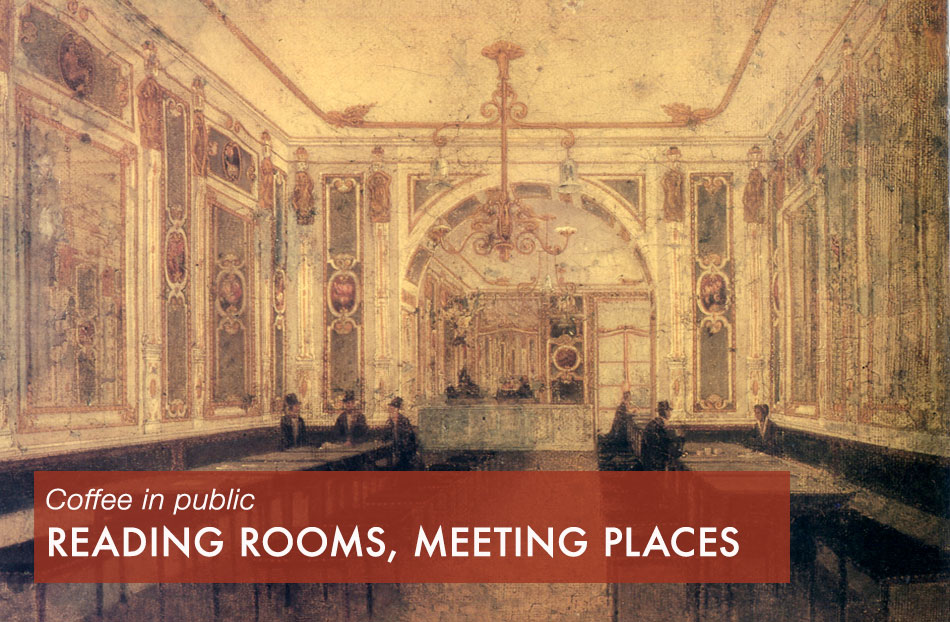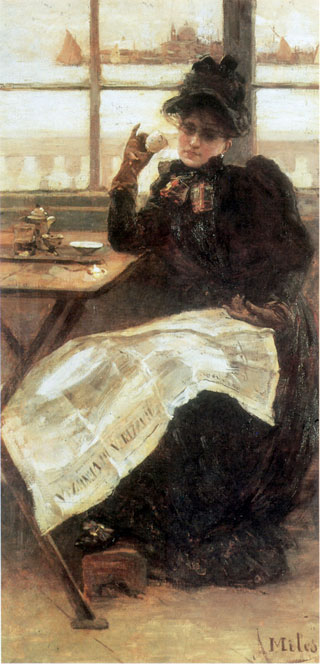

Alessandro Milesi, At the Cafe, c. 1900–1915. Genoa, Galleria d'Arte Moderna
Top: Lombard painter, Caffè degli Specchi in Milan, first half of the 19th century. Milan, Palazzo Morando Historic Collections
The first places to serve coffee almost exclusively were established in Mecca, Cairo and Istanbul. They were places of conversation where, as well as the enjoyable refreshment offered by the drink, one could pass the time talking or playing.
In the 17th century, the fashion for coffee began to conquer Europe too. This led to the birth of a new type of public premises that combined the moment of pure pleasure linked to the act of drinking coffee with speculative business talk. Coffee houses became widespread in England's biggest cities, becoming popular places for discussing business and hotbeds of political discussion. In Italy the café immediately took the country by storm: in 1868 the first café opened in Piazza San Marco in Venice, beneath the porticoes of the Procuratie, and from then on the habit of sipping coffee while seated comfortably at tables in the open spread rapidly.
It was in Vienna, a city with more than six hundred cafes in the 18th century, that the custom of reading the paper at the cafe took hold. Thanks to the happy intuition of some café owners, patrons could read the news published in the magazines and papers free of charge. Cafes gradually turned into reading rooms, where the famous rods to which the papers were attached to facilitate reading and for better storage soon appeared. Thus, the newspaper appeared on the café tables alongside the coffee cup
